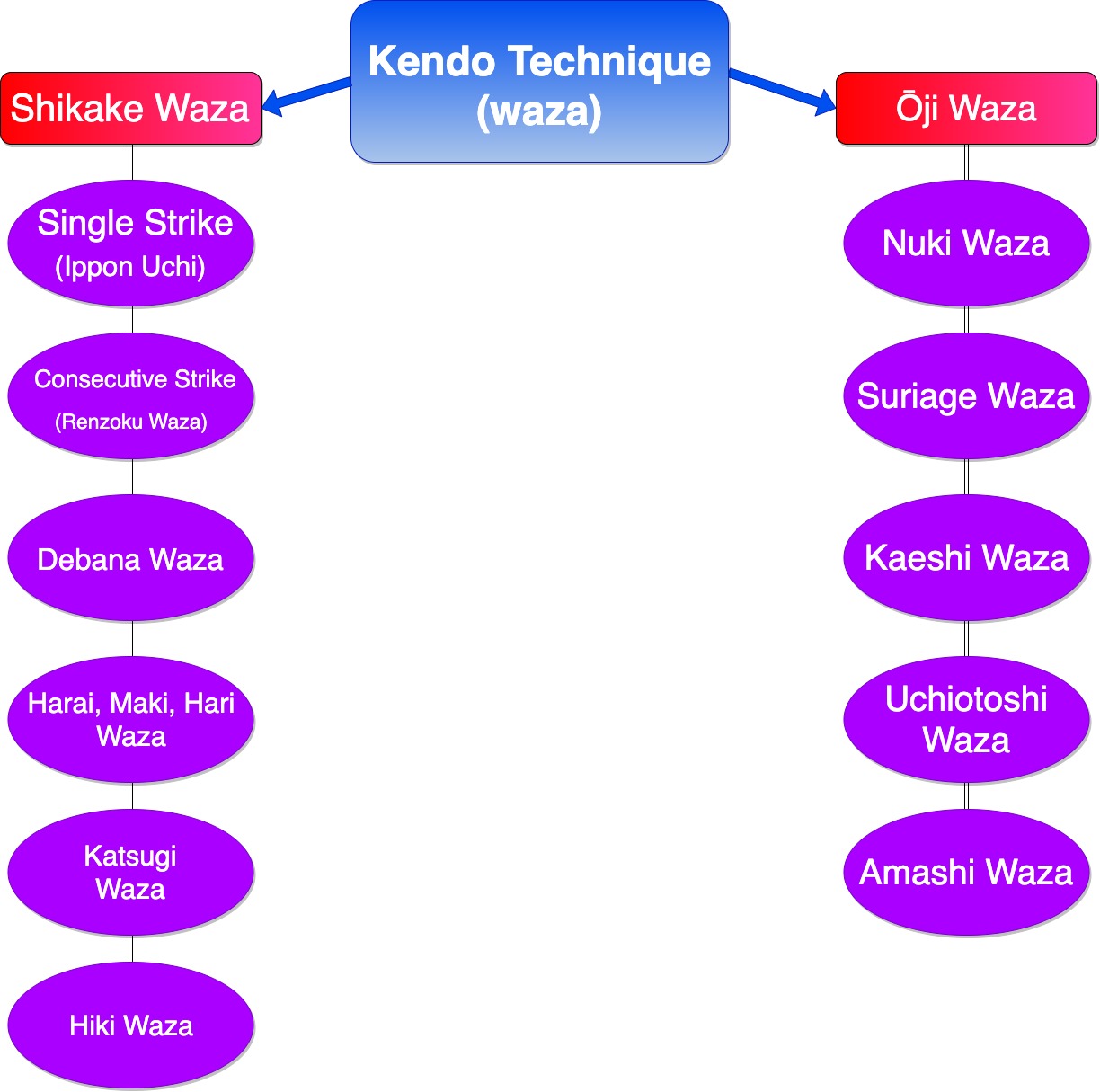You Got It!
Kendo Techniques Guide
Kendo techniques are actually very simple. Yet it is pretty hard to learn and execute.
As we all know, kendo is derived from kenjutsu. So these techniques are based on these kenjutsu techniques. It is recommended to learn these techniques step by step.
In kendo, techniques are categorized into two; shikake waza and oji waza. Waza is technique in Japanese.
- Shikake waza means “techniques that you initiate”.
- Oji waza means “techniques that you execute against your opponent as a counterattack”.
Basically, in shikake waza, “you” are the one who starts attacking. In oji waza, it is your opponent who starts striking you and you react to your opponent’s attack.
Shikake waza
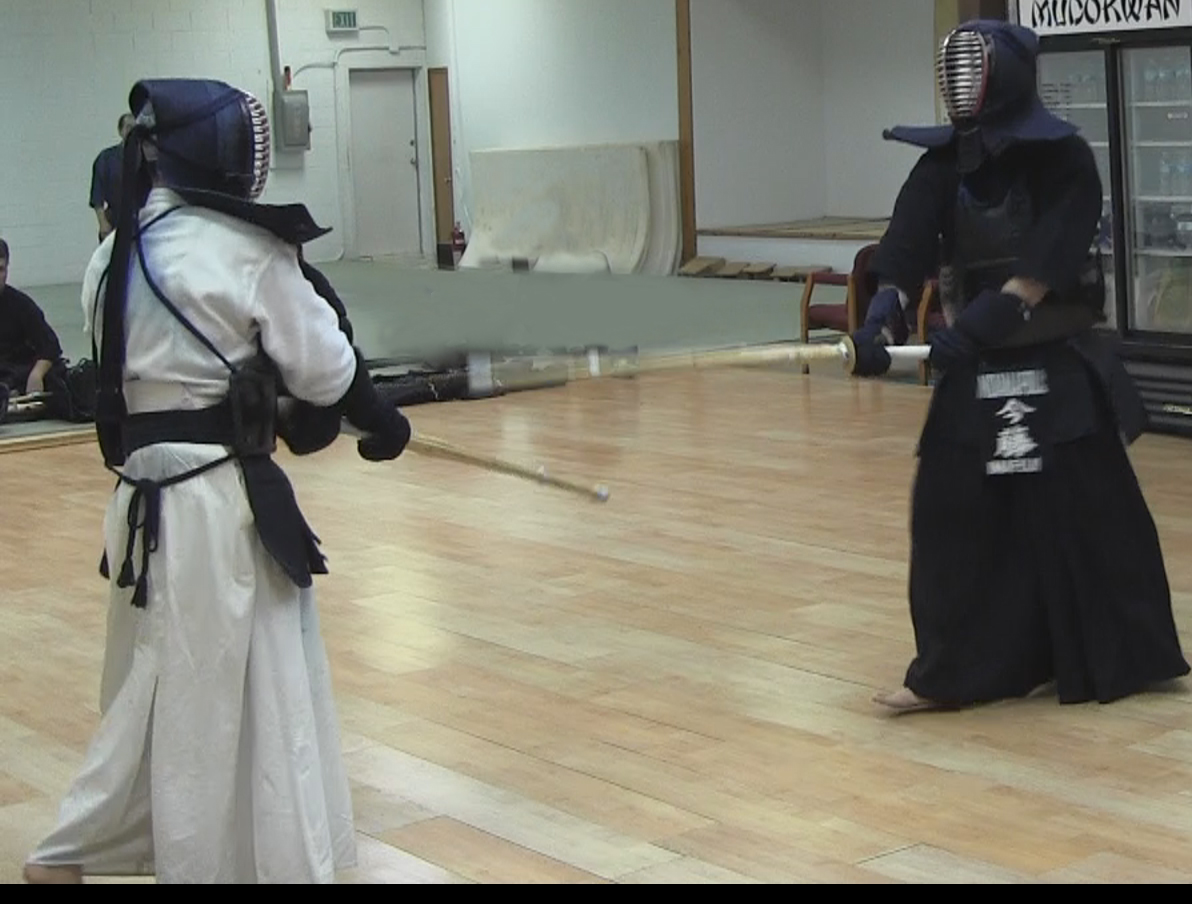 Shiakke Waza: A moment of Makiotoshi
Shiakke Waza: A moment of MakiotoshiIn the diagram, there are six techniques in shikake waza. There is debana waza in shikake waza. I personally thought it should be in oji waza because you react to your opponent’s attack. However, according to Kendo -Physical Education Text Book- by All Japan Kendo Federation, debana waza is a part of shikake waza.
Single strikes are easy to understand, aren't they? You are striking men, kote, do or tsuki, when you think you should strike. So you are in your striking distance and you go when you think you should.
Renzoku waza
It means “consecutive attacks”. For example, kote-men is one of the consecutive attacks all the kendoists use a lot. If you strike two targets consecutively, we call it “ni-dan waza”. If you strike three targets consecutively, e.g. kote-men-do, then it is called “san-dan waza”.
Why do we strike consecutively?
- we cannot get the first/second cut.
- the first and/or second cut is a bait.
I do not want to think that the first and/or second strike of these consecutive strikes are fake. “Fake” is to trick your opponent. We want to fight fair and squire. That is the golden rule in kendo.
You execute your attack fully so that it can be a valid cut. However, you know your opponent will react to your first strike (you are anticipating) so you execute another strike.
All the strikes should be fully executed in consecutive strikes.
Debana waza
Debana means “just about to happen/start”. It is also called "degashira". The same meaning but a different way to express it.
In debana waza, you strike men or kote at the moment when you sense your opponent’s intention to execute his/her attack. Debana-men and debana-kote are most commonly used kendo techniques.
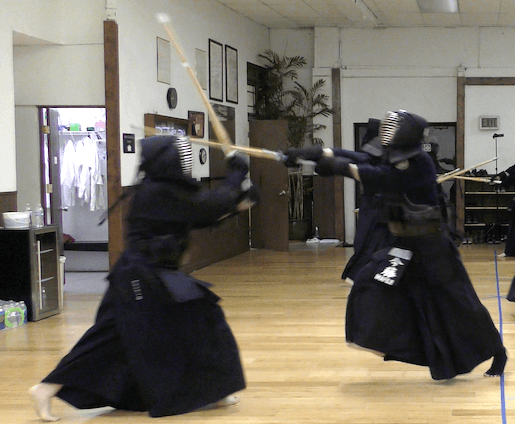 debana (degashira) men
debana (degashira) menHarai, Hari, Maki waza
(Ken wo Korosu)
You might have heard the word, "San-Satsu" or "San-Sappo". It means "3 kills". These are...
- To Kill Your Opponent's Sword,
- To Kill Your Opponent's Waza, and
- To Kill Your Opponent's Ki.
The techniques introduced here are to kill your opponent's sword. Click here for more information on "san-satsu".
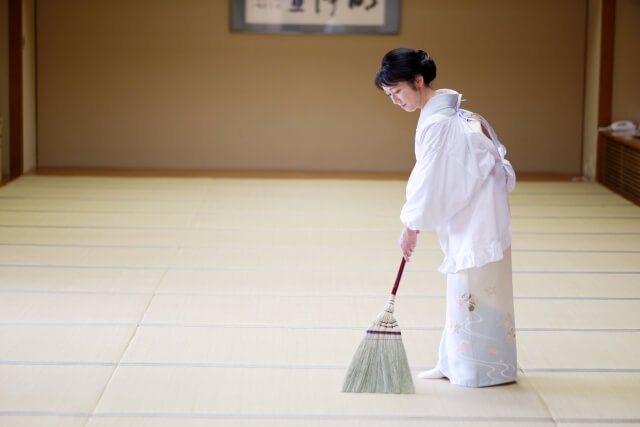
Harai waza: Harai means "sweep". You may have heard of "ashi-barai" in other martial arts such as judo and karate. As ashi-barai is translated as "foot sweep", you sweep your opponent's shinai.
In harai waza, you sweep your opponent’s shinai away from the center with your shinai. It is commonly used to make an opening and strike. Harai-men and harai kote are popular kendo techniques.
You should be careful when you use "harai". If you make it too big, you will be vulnerable since your kensen will be also away from the centre.
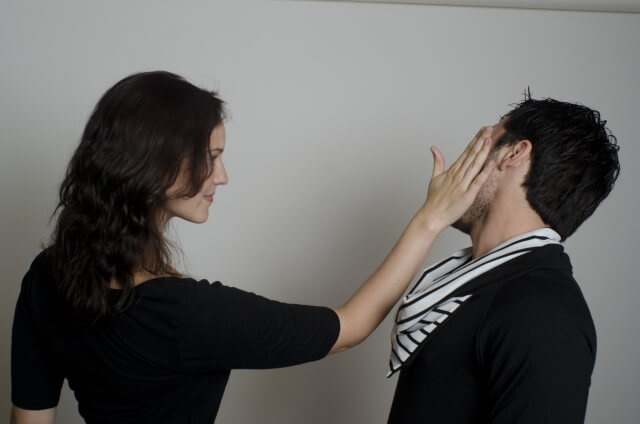
Hari Waza: Hari is very similar to harai but it is more like a "slap". It is very hard to distinguish between "harai" and "hari".
- Harai is a longer stroke just like you are sweeping.
- Hari is a short and sharp motion.
They are both to more your opponent's shinai out of your way. Hari is less risky than harai since the movement is smaller. But if you do it too weak, your opponent's shinai will stay in the centre.
I recommend to do this when you strike your opponent's kote after using the hari motion from the ura of your opponent's shinai.
Maki waza: In maki waza, you hook your opponent shinai with your shinai and spin up or down your opponent’s shinai.
If you execute this technique with the right timing and the right amount of strength, you will actually spin off your opponent shinai from his/her hands.
Maki Age Done Perfectly
Maki-age starts around 0:24 of the video.
Katsugi waza: This is a technique most often used to surprise your opponent. There is a time that you cannot find any openings after you tried everything. This is the time for you to use a katsugi waza.
Katsugi is a noun form of “katsugu” that means “to carry on your shoulder”. So in katsugi waza, you lift your shinai towards your left or right shoulder instead of above your head and strike kote, men or do.
 Katsugi Waza to the Left Shoulder
Katsugi Waza to the Left Shoulder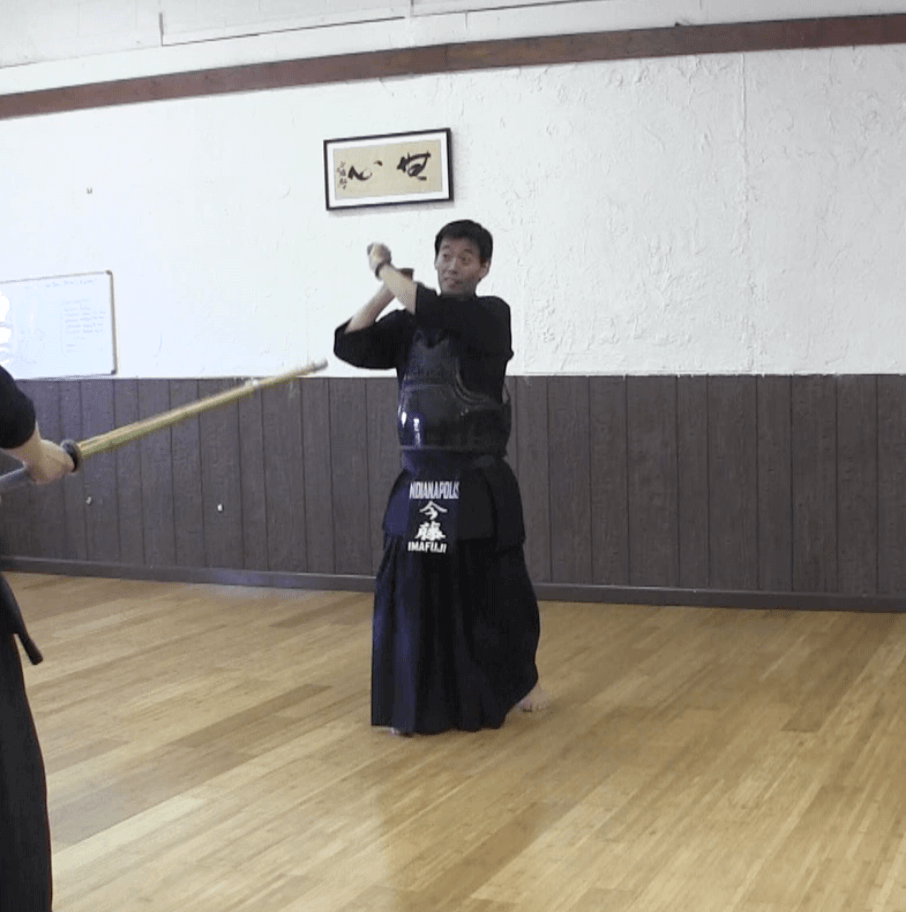 Katsugi Waza to the Right Shoulder
Katsugi Waza to the Right ShoulderAs you can see, you have openings too. So when you do this, you do it with full commitment. The katsugi to the left shoulder is more common than the one to the right shoulder.
Hiki waza: In hiki waza, you strike hiki-men, hiki-kote or hiki-do from tsubazeri-ai. Hiki means “going backwards” in this case.
Oji waza
Oji (ouji) waza is basically counterattack techniques. You react to your opponent’s attack.
Even though you react and counterattack your opponent, you do not want to be in the state of “fleeing”. Before executing an oji waza, you should already win the mind game before actual striking happens. In other words, you should make your opponent to strike as you want (ideal).
Nuki waza: Nuki waza is seen in kata No.1 (men-nuki-men), kata No.2 (kote-nuki-men) and kata No.7 (men-nuki-do). You can avoid a cut to your men or kote by lifting your arms up (kata No.1) or down (kata No.2).
In kata No.7, you avoid your opponent’s men cut by just moving to the right while striking your opponent’s do. Men-nuki-do is also introduced in Bokuto niyoru Kendo Kihon Waza Keiko-ho (kihon 5).
Suriage waza: Suriage waza is seen in kata No.5 (men-suriage-men) and kata No.6 (kote-suriage-kote). Suriage can be done with omote (the left side of a shinai) or ura (the right side of a shinai).
Men-suriage-men and kote-suriage-men are most commonly used kendo techniques.
Kaeshi-waza: Kaeshi waza is seen in kata No.4 (tsuki-kaeshi-men). In kaeshi waza, your wrists rotates to strike a target. In kendo, men-kaeshi-do is most commonly used. Some people are good at kote-kaeshi-men.
Uchiotoshi: Some people say it is the same as kiriotoshi and others disagree with that. Kiriotoshi is the ultimate technique of Itto-ryu. Men-kiriotoshi-men is considered to be the most difficult technique.
It is similar to ai-men (both striking men) but your sword cuts your opponent before your opponent cuts you. So it looks like men strikes in kata No.4, in which both uchitachi andshitachi strike men. Then if one uses kiriotoshi in that situation, he/she can cut his/her opponent. It is one motion.
However, uchiotoshi is two motions. What you do in uchiotoshi, you knock down your opponent’s shinai coming towards a target and strike. Uchiotoshi means “to knock down”.
So in Kihon 9 of Bokuto niyoru Kendo Kihon Waza Keiko-ho, you knock down your opponent’s do strike and strike men.
Uchiotoshi waza is very rare in the modern kendo because strikes are too small for us to execute this technique.
Other Kendo Techniques
There are more techniques that are not listed here. Some of the techniques listed here are already very advanced. So probably if you are not 4th dan or above, you do not have to worry about other techniques such as katate (one-handed) waza.

